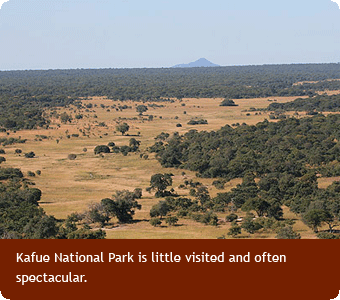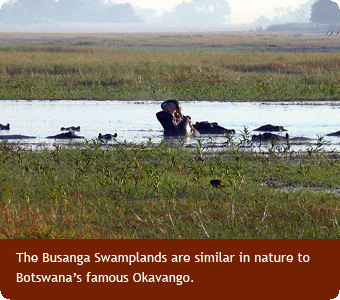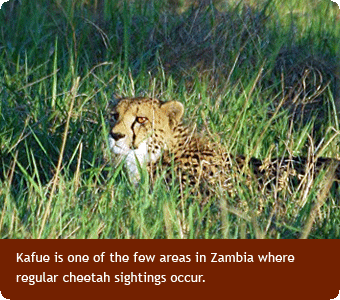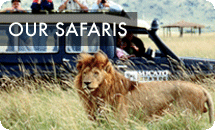Kafue



 My Safari
My SafariCall a specialist to talk about Kafue now.
Kafue National Park is Zambia's oldest park, proclaimed in 1950. The park, at 22 400 square kilometres, is the size of Wales and twice the size of Yellowstone National Park in the USA. The park affords an excellent opportunity to view wildlife without anything that can spoil the viewing.
To the extreme north of the Kafue lie the Busanga Plains - one of Zambia's most significant wetland resources and one of the few areas in the world that remain untouched by development and human activity.
The Kafue River and its tributaries help the great diversity of this landscape of rolling grass plains and forests. Much of the park is wooded but opens up at intervals to wide grassy clearings known as 'dambos'.
Vast herds of antelope roam the plains and woodlands - red lechwe, the ubiquitous puku, the stately sable and roan antelopes, waterbuck, tsessebe, hartebeest, as well as oribi and duiker. [cont.]
Large prides of lion, solitary leopards and cheetah are the prime predators. Smaller predator groups include jackal, civet, genet and various mongooses. Other species found in the Park include yellow-backed duiker, common duiker, kudu, grysbok, warthog, bushpig, serval, hyena, jackal, baboon, vervet monkey, porcupine, wild dog, pangolin, zebra and buffalo.
Bird-watching is superb, especially on the rivers and the dambos. Over 400 species of birds have been recorded throughout the park. Notable species include the wattled crane, purple crested lourie and Pel's fishing owl. For many people visiting the Busanga Plains, the birdlife is certainly an attraction and includes five species of rollers, six bee-eaters, nine kingfishers and fourteen egrets and herons. There are also specials such as the crowned cranes, Fulleborn's and Rosy-throated Longclaws, the Lanner Falcon and large flocks of open-billed and yellow-billed storks.
The Kafue and Lunga Rivers offer superb fishing opportunities, especially bream, barbel and fresh water pike. Most lodges have fishing tackle, rods, boats and bait available.
The waters of the Kafue River are also home to large numbers of hippopotamus and crocodile.
Game is best sighted in the dry season from April to October, but the beauty of the park is at its best after the rains in the first half of the year. Many of the parks internal roads are inaccessible between November and April.
Kafue Wildlife Highlights:
-
Lion
-
Leopard
-
Hyena
-
Cheetah
-
Wild Dog
-
Red Lechwe
-
Blue Wildebeest
-
Oribi
-
Lichtenstein's Hartebeest
-
Pangolin
Kafue Park Entry Fees:
$15 per day adult, $7.50 per day children
Getting to Kafue:
The roads are not well graded and the Park is best visited by air charter or robust four wheel drives. There are light aircraft airstrips at several Kafue lodge and camps, and flights can be arranged from Lusaka or the Victoria Falls.
By road, Kafue can be reached from all four sides of the country. From Lusaka take the road to Mumbwa (not the best quality!). If planning to visit the northern camps such as Hippo Camp, Mc Brides or Lunga Cabins, take the northern road out of Mumbwa. A 4WD is recommended on this route.
To reach the southern section of the park, continue through Mumbwa on the main road. Sixty six kilometres from Mumbwa is a left turning to Itezhi Tezhi Dam and the southern lodges. This previously appalling, once tar road has recently been graded back to gravel and is a lot better. It still requires a strong vehicle, although not necessarily a 4WD.
To reach the Busanga plains and nearby camps, take the road that goes through the park until you reach the Kafue River Bridge, shortly after the bridge is a gate on the northern side.





